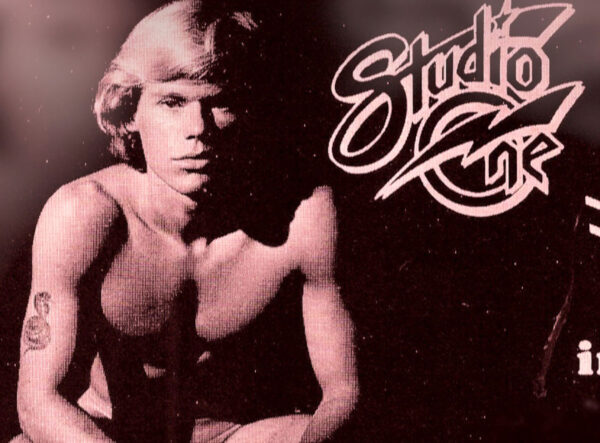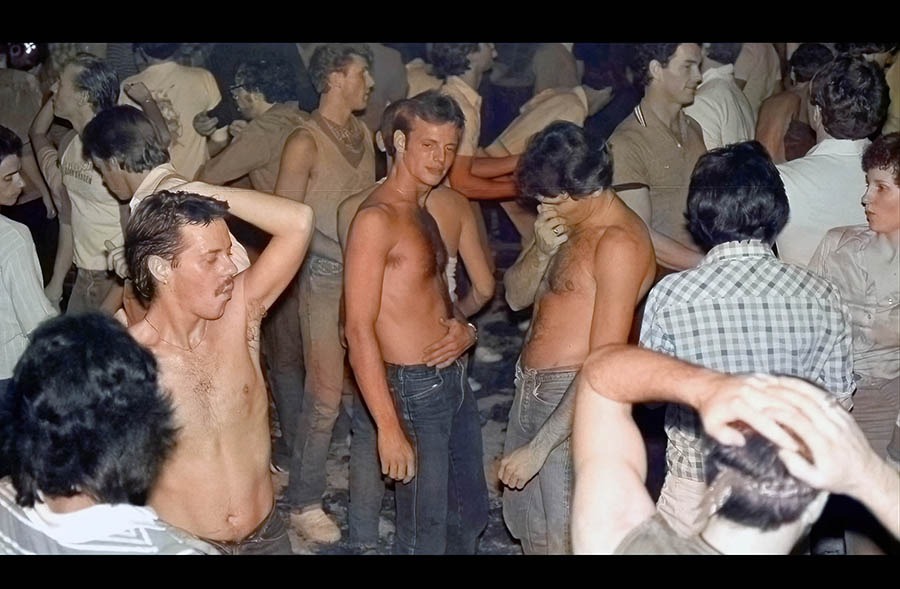
Studio One Forever is a documentary about the infamous Studio One nightclub in West Hollywood, known for its racist and sexist door policies as much as anything else. Launched in 1974, the club ran for 19 years until 1993. Why Studio One decided to have racist and sexist door policies is not made clear in the film. Equally successful gay LA clubs of the time including Jewel’s Catch One and Circus had a melting pot of nationalities and lots of women on their dance floors. Studio One, however, required black patrons to provide up to three forms of ID to gain entrance, compared to one or no ID required for white attendees. Arbitrary rules were set in place to deter women too, for example, randomly enforced no open-toed shoe rules. Founder Scott Forbes brushed off criticism of his door policies at the time, citing a need to deter gang members and ‘bad people’ from coming to the club and insisting that his white customers would be uneasy with too many black people or women in the club. This is rather ironic given that the music the mostly shirtless white men were dancing to was largely by black or female artists. A couple of the interviewees in the documentary feign ignorance of the door policy although they must have been aware of it as the club was picketed by protesters on many nights, The Advocate covered Studio One’s racism issue several times and the LA Times ran a front-page story on the controversy in 1976. It would have been obvious to anyone that the racial mix of the dancefloor didn’t match that of the city. The club itself was a mecca for gay men seeking acceptance from the homophobic outside world, so it must have been a double blow for black queer men to receive a knock-back on the door. Along with Scott Forbes, one of the other co-owners was a black man, Ernie Caruthers, so there was a case of the oppressed becoming the oppressor here.
 For those that made it past the front door, the club was a temple to hedonism. A beautiful shirtless crowd of 1000 men regularly packed the dancefloor, many of whom were high on coke, acid, or crystal meth. The club had a shop that sold mirrors with grooves in them, razor blades, poppers, and records. Part of the club was a cabaret theatre called The Backlot. This had a separate entrance and attracted Hollywood royalty including Elton John, Farrah Fawcett, Bette Davis, Rock Hudson, Diana Ross, Roger Moore, Burt Reynolds, and many more. The Backlot shared toilets with the main club room so it wasn’t unusual for strung-out clubbers to find a star at the urinal next to them. The stars themselves loved the idea of being in the orbit of the gay disco boys.
For those that made it past the front door, the club was a temple to hedonism. A beautiful shirtless crowd of 1000 men regularly packed the dancefloor, many of whom were high on coke, acid, or crystal meth. The club had a shop that sold mirrors with grooves in them, razor blades, poppers, and records. Part of the club was a cabaret theatre called The Backlot. This had a separate entrance and attracted Hollywood royalty including Elton John, Farrah Fawcett, Bette Davis, Rock Hudson, Diana Ross, Roger Moore, Burt Reynolds, and many more. The Backlot shared toilets with the main club room so it wasn’t unusual for strung-out clubbers to find a star at the urinal next to them. The stars themselves loved the idea of being in the orbit of the gay disco boys.
The AIDS crisis, of course, changed everything from 1982 onwards, and many of the interviewees share heart-felt memories of fellow clubbers lost to the virus. One barman highlights a staff picture taken from around 1981. Of the 105 Studio One staff members in the picture, only 2 remain alive today – a shocking fact. The club became involved with AIDS activism, and one of the earliest LA AIDS fundraisers was held there, hosted by Joan Rivers and Sylvester.
In recent years, the club, now a hip-hop club, was set for demolition and redevelopment. A campaign to save Studio One’s building has led the developers to agree to include the building as part of its redevelopment, and the building has been dismantled and is currently in storage. However, given its racist history, Studio One probably should not be reconstructed.
Director Marc Saltarelli combines vintage footage of the club and interviews with a few of the surviving staff members and clubbers. The documentary is slightly cheesy and scattergun in its story-telling and he skips over the racist elements of the club’s history very briefly which reduces the credibility of his work. Luckily, we don’t have clubs like this anymore.
STUDIO ONE FOREVER will have its World Premiere at LA's OUTFEST Film Fest
Queerguru’s Contributing Editor Ris Fatah is a successful fashion/luxury business consultant (when he can be bothered) who divides and wastes his time between London and Ibiza. He is a lover of all things queer, feminist, and human rights in general. @ris.fatah


Comments
One response to “Queerguru’s Ris Fatah reviews STUDIO ONE FOREVER the story of the infamous LA gay club with a racist/sexist door policy”
I went to Studio One several times in the early eighties, usually accompanied by my friend, Robert, who was black. We never encountered any problems. Hedonism did indeed reign, although Circus and Catch One definitely had more bounce to the ounce.
Later on, in the nineties, I got into a dispute with bartender in the Backlot. I was probably trying to stretch my pennies. Two large bouncers appeared on either side of me , and lifted me up vertically under my armpits, carried me up the flight of stairs, then down the outside flight, and deposited me gently on the sidewalk, still vertical. It was slightly hysterical. I weighed less then.
The Studio One building, which was basically an airplane hanger, won’t be missed.